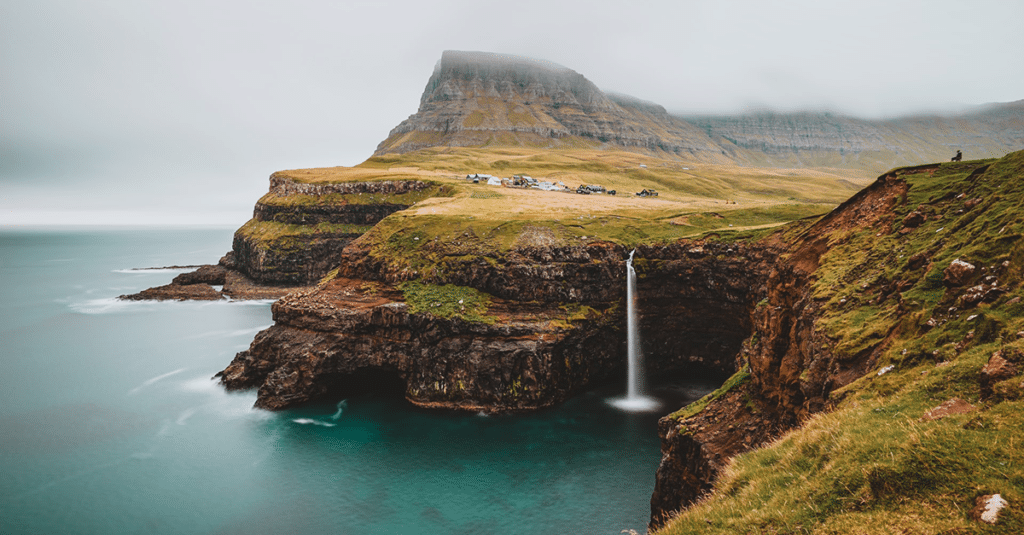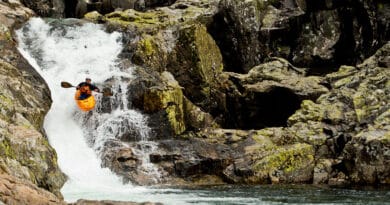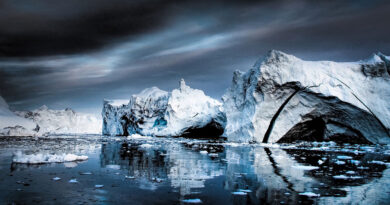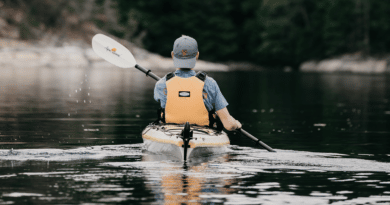Breathtaking Places you Must Explore in The Faroe Islands
The Faroe Islands (Føroyar) are situated halfway between Scotland and Iceland in the middle of the North Atlantic (62º00’N and 06º47’W).
- THE FAROE ISLANDS
- FAROE ISLANDS LANDSCAPE AND CLIMATE
- PLACES TO VISIT IN THE FAROE ISLANDS
- 1. Drangarnir Sea Stacks
- 2. Bøsdalafossur Waterfall
- 3. Mykines Island
- 4. Múlafossur Waterfall
- 5. Trælanípan Cliff
- 6. Geituskorardrangur
- 7. Saksun
- 8. Kallur Lighthouse
- 9. Hvíthamar
- 10. Gjógv
- 11. Tjørnuvík
- 12. Ásmundarstakkur
- 13. Vestmanna Sea Cliffs
- FUN FACTS ABOUT THE FAROE ISLANDS
- WILDLIFE IN THE FAROE ISLANDS
- OUTDOOR FITNESS AND ADVENTURE SPORTS IN THE FAROE ISLANDS
- FAROE ISLANDS HISTORY AND POLITICS
- TRAVELLING INFORMATION
- FAROE ISLANDS HIKING INFORMATION
- VILLINGARDALSFJALL / ENNIBERG
- DRANGARNIR – SEA STACKS
- FAROE ISLANDS – NÓLSOY
- FAROE ISLANDS – MYKINES
- FAROE ISLANDS – SAKSUN
- TRÆLANÍPA / BØSDALAFOSSUR
- More Adventure
THE FAROE ISLANDS
The closest land is North Rona, part of Scotland’s Outer Hebrides, which is 257km (139 nautical miles) to the south.
Wild, rugged scenery, unforgettable waterfalls and beautiful coastlines define the scenery of the Faroe Islands.
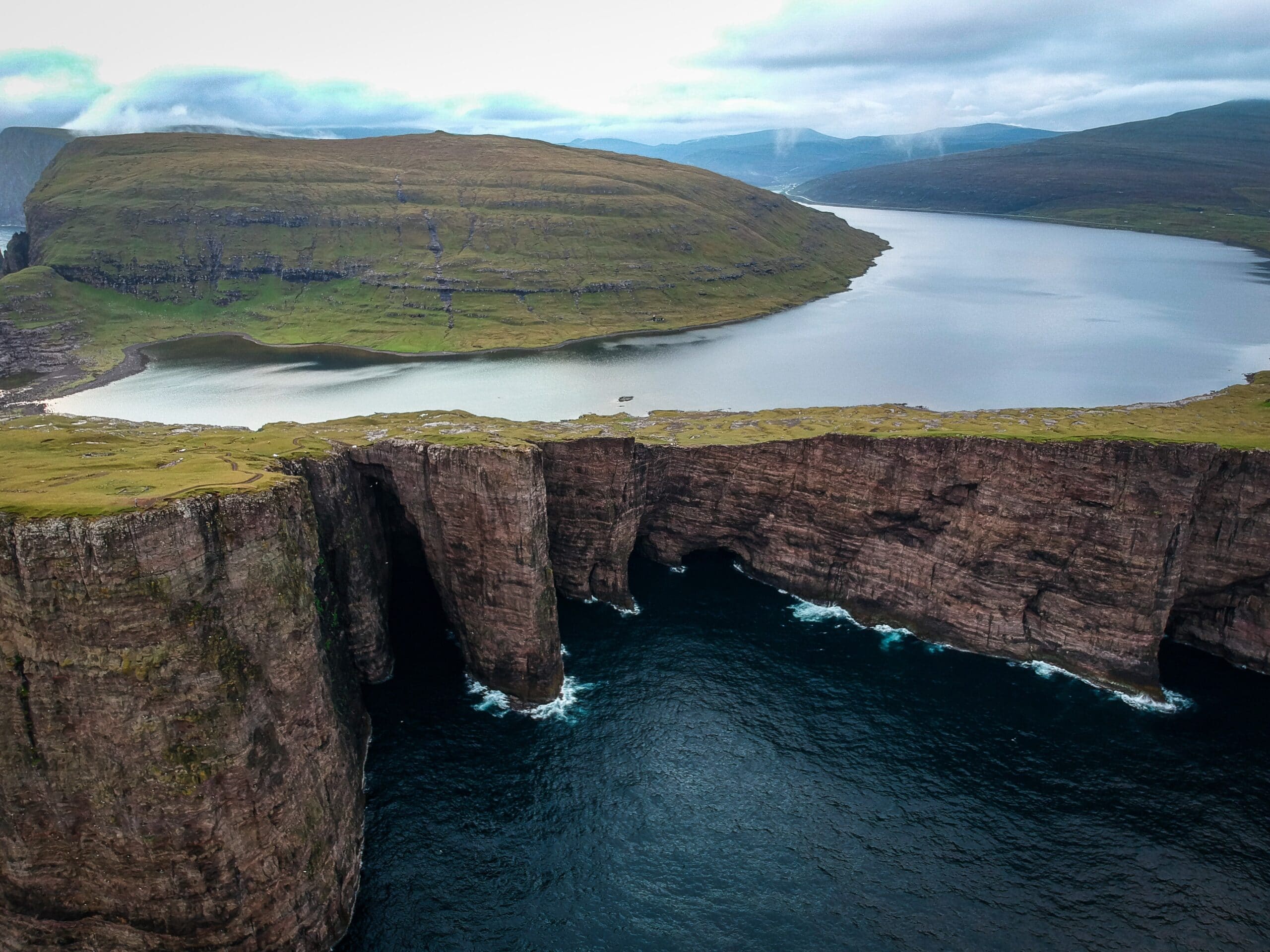
Sights such as the Drangarnir sea stacks, the island of Mykines (home to a substantial puffin colony) and the hike along Leitisvatn/Sørvágsvatn out to Trælanípa and Bøsdalafossur waterfall are all favourites among visitors from abroad and locals alike.
The latter leads to an impressive optical illusion of a large raised lake that descends via the Bøsdalafossur waterfall into the Atlantic Ocean below.
The Faroe Islands are located in the Gulf Stream and consist of 18 volcanic islands.
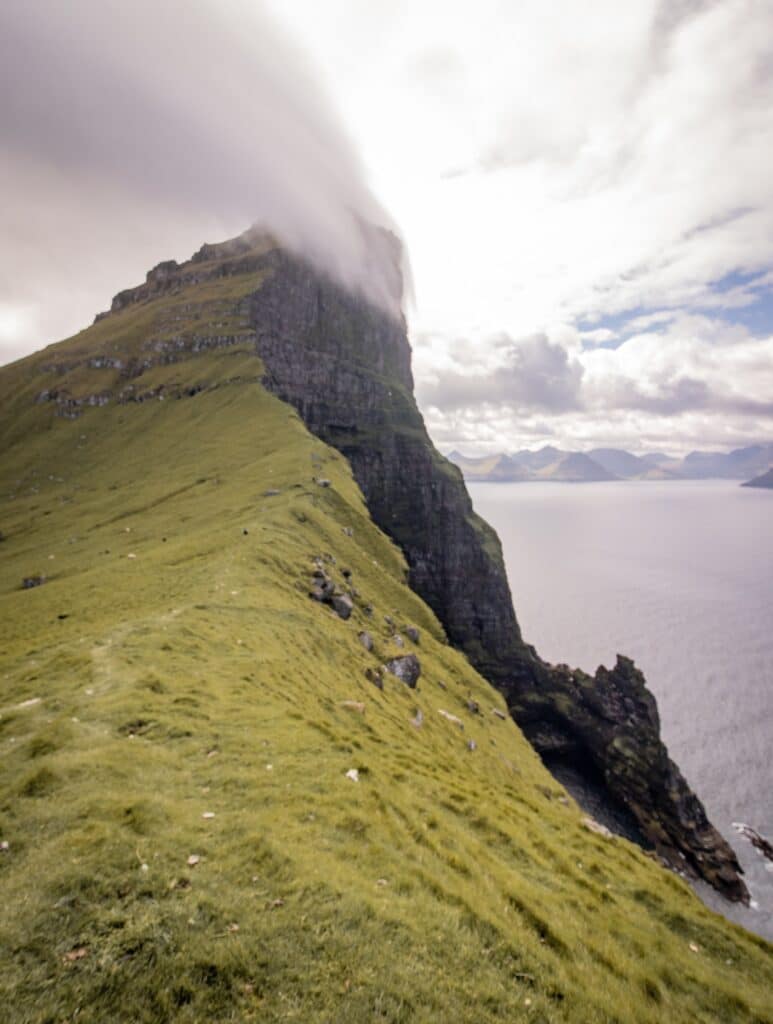
These are separated by narrow sounds and fjords arranged roughly in the form of an arrowhead. All but one of the islands are inhabited.
As of January 2020, over 51,000 people from over 80 different nationalities live in the Faroe Islands.
The national language is Faroese, but Danish has equal status in all official affairs. They are a self-governing region within Kingdom of Denmark.
Stay warm with these great Patagonia Fleeces
FAROE ISLANDS LANDSCAPE AND CLIMATE
The Faroese archipelago is 113km (70 miles) long and 75km (47 miles) wide. The combined total coastline for all 18 islands is 1,100km (687 miles).
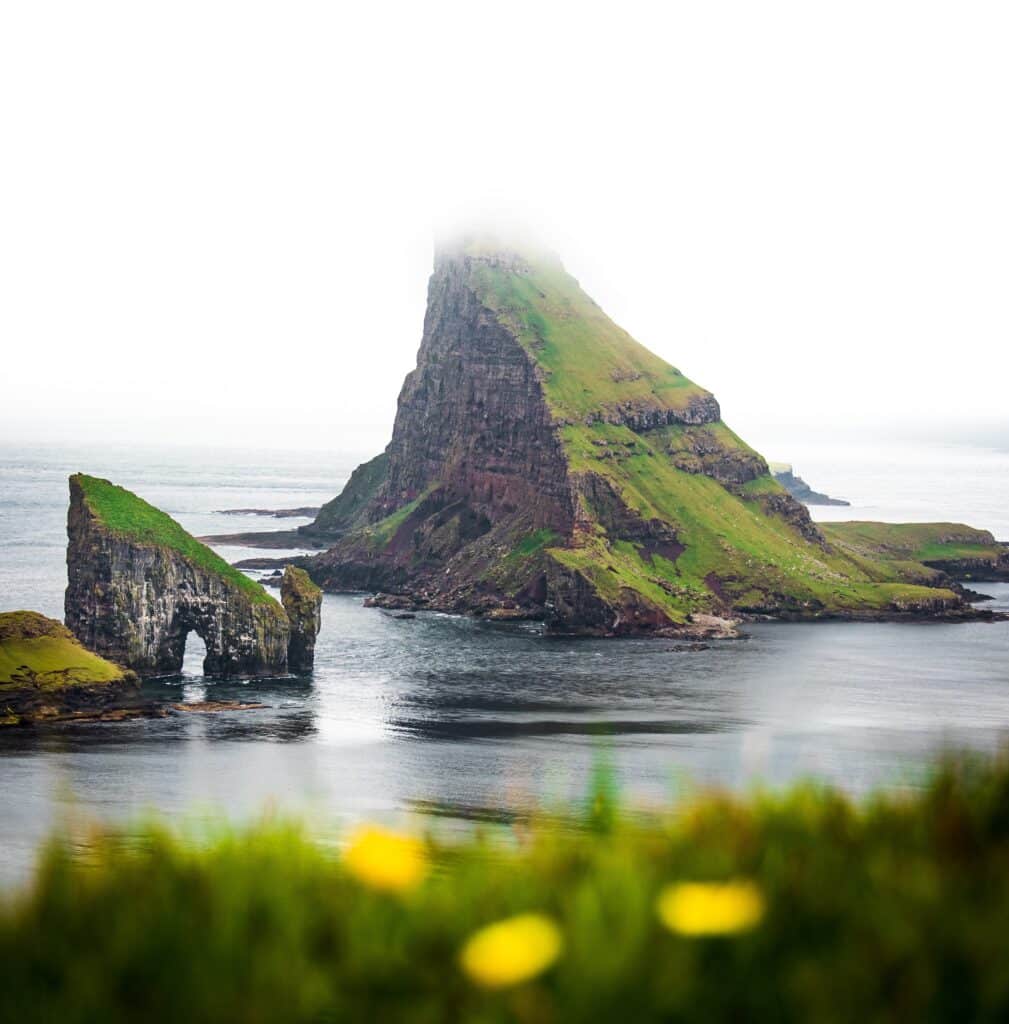
No point in the Faroe Islands is further than 5km (3 miles) from the sea.
- Total land area: 1,399km2 (540 square miles)
- Total marine area: 247,000km2 (105,792 square miles)
- Heights: Highest peak 880m (2,887ft); average height above sea level 300m (980ft)
- Climate: Average 3º-11ºC, winter-summer
- People population: over 50,000. Sheep population: over 70,000.
The average temperature during winter is 3°, one of the highest averages among the Nordic countries.
Learn the less commonly known reasons why you should spend more time outdoors
PLACES TO VISIT IN THE FAROE ISLANDS
1. Drangarnir Sea Stacks
One of the most unique sights in the Faroe Islands is “Drangarnir”. Drangarnir is two sea stacks between Vágar and the islet Tindhólmur. The distinct names of Drangarnir are ‘Stóri Drangur’ and ‘Lítli Drangur’, which can be translated into Large and Small sea stacks.
2. Bøsdalafossur Waterfall
The Bøsdalafossur waterfall runs from the lake Leitisvatn into the Atlantic Ocean from 30 metres above sea level. The waterfall is situated on the western coast of Vagar island.
3. Mykines Island
Mykines is the westernmost of the 18 main islands of the Faroese Archipelago. Mykines is blessed with rich birdlife and unbelievable nature.
It is most famous for its colony of Puffins. The only settlement on the island is also called Mykines.
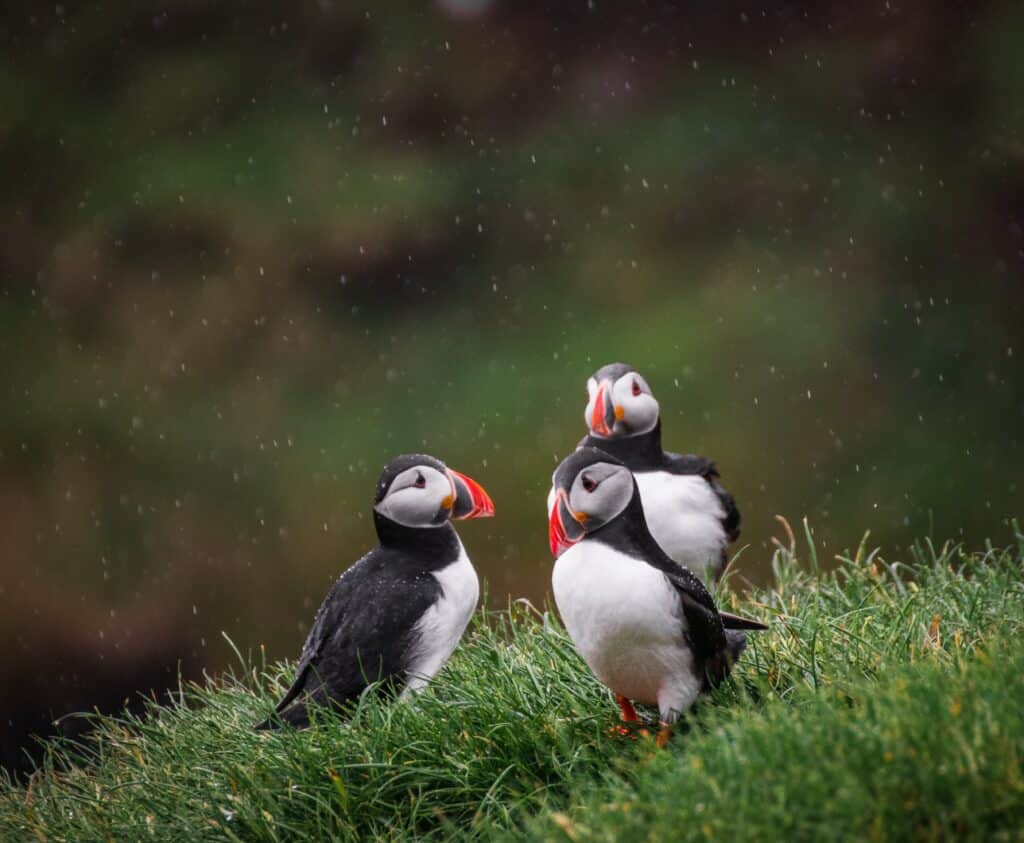
4. Múlafossur Waterfall
The waterfall in Gásadalur empties 60m (200ft) directly from the clifftop into the ocean leaving visitors with an immense feeling of losing their breath. You will find Múlafossur Waterfall on Vagar island.
5. Trælanípan Cliff
Trælanípan is an impressive rocky promontory that juts out into the North Atlantic Ocean. It grants great views overlooking the stormy waters and the lake below. This is one of the most popular spots in the Faroe Islands. In English Trælanípan means “Slave Cliff”.
6. Geituskorardrangur
This giant freestanding rock formation on the island Vagar towers 115m above the sea in the shape of a jutted natural pyramid.
7. Saksun
Saksun (Danish: Saksen) is a remote hillside village near the northwest coast of the Faroese island of Streymoy, in the Sunda Municipality. Set in a natural circular amphitheatre high above a tidal lagoon, it is comprised of grass roofed houses.
Located on Streymoy island the beautiful lagoon fills with seawater twice a day. It was formerly used as a harbour but a storm blocked it with sand.
8. Kallur Lighthouse
The rustic, red and white lighthouse tops the northern tip of the island of Kalsoy. The isolated structure helps guide ships around the cluster of lands that crops up from the Atlantic Ocean to form the Faroe Islands.
9. Hvíthamar
This attraction above the village Funningur is one of the most popular short hiking trails in the Faroe Islands. You will have a great view of the Funningsfjørður fjord and the surrounding mountains. There is also a stunning view to the north towards the island Kalsoy.
10. Gjógv
Gjógv is a village located on the northeast tip of the island of Eysturoy, in the Faroe Islands and 63 km north by road from the capital of Tórshavn. The village was named after a 200-metre long sea-filled gorge that runs north to the sea from the village.
11. Tjørnuvík
Tjørnuvík is the northernmost village of Streymoy. It is surrounded by large mountains and a beautiful beach that overlooks the giant and the witch (Risin og kellingin).
12. Ásmundarstakkur
Ásmundarstakkur is a stunning sea stack west of the village Sandvík on the islands of Suðuroy. A narrow road takes you all the way to this beautiful place in the northern part of Suðuroy.
From here you have a great view of Ásmundarstakkur from the nearby rock cleft Rituskor. In order to get to Rituskor, you will cross a short wooden bridge.
13. Vestmanna Sea Cliffs
The Vestmanna Sea Cliffs are a natural wonder and a must-see experience while in the Faroe Islands. Sheer mountain sides, towering sea stacks, and rich birdlife
FUN FACTS ABOUT THE FAROE ISLANDS
The Faroe Islands is one of the world’s leading nations in producing sustainable electricity with over 50% of the nation’s electricity deriving from renewable energy sources.
The aim is that the nation’s electricity will be sourced solely from renewable energy by 2030.
Many houses in the Faroe Islands have grass roofs. Sheep are usually used for mowing the grass.
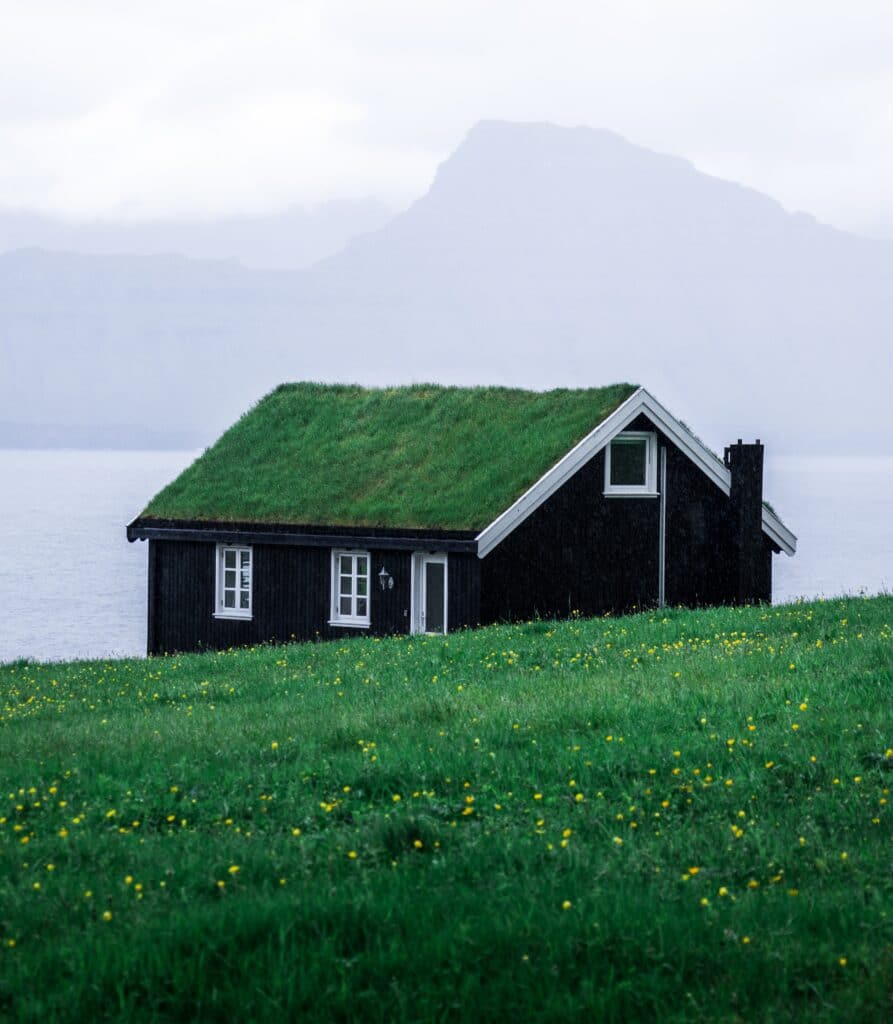
The Prime Minister’s phone number is in the phone book.
Tinganes, where parliament met for the first time in year 825, is thought to be one of the oldest parliamentary meeting places in the world still in use.
There is no prison in the Faroe Islands. Prisoners being held for more than a year and a half are sent to prisons in Denmark.
There are only three traffic lights in the Faroe Islands – all located in Tórshavn.
Niels R. Finsen, a Faroese physician, won the Nobel Prize in Physiology or Medicine in 1903.
WILDLIFE IN THE FAROE ISLANDS
The Faroe Islands are famous for birds. Many think the national bird is the puffin.

It is in fact the oystercatcher.
Gannets and kittiwakes are common, with the diving of the former and the powerful orchestral singing of the latter.
Well over 305 bird species have been recorded in the Faroe Islands. Of these, around 50 species breed regularly on the islands and another 60 are regular visitors, while almost 200 of the recorded bird species are either scarce or rare visitors to the Faroe Islands.
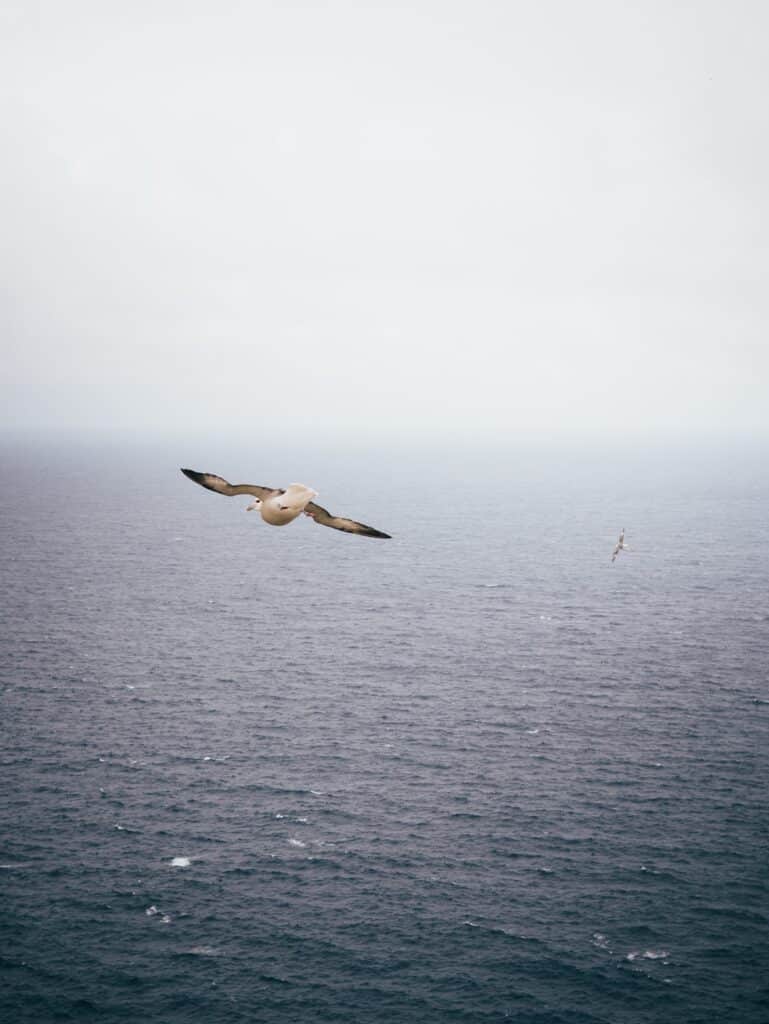
Birdwatching is, of course, seasonal. Most visitors come to the Faroe Islands during summer, which is the breeding season for Faroese birds.
OUTDOOR FITNESS AND ADVENTURE SPORTS IN THE FAROE ISLANDS
The Faroe Islands aren’t just ideal for relaxing and taking your mind off things – they’re also the perfect playground for adventure sports of all sorts!
- Ocean Kayaking
- Cliff jumping
- Rappelling
- Snorkeling
- Speed boating
- Diving
FAROE ISLANDS HISTORY AND POLITICS
According to the Encyclodedia Britannica, “The name first appeared as Faereyiar (c. 1225), meaning “Sheep Islands,” which presumably led to the national symbol, a ram.
First settled by Irish monks (c. 700), the islands were colonized by the Vikings (c. 800) and were Christianized by the king of Norway (c. 1000). The remains of a Gothic cathedral, begun in the 13th century but never completed, are at Kirkjubøur (Kirkebø).
Learn more about famous female explorers
The Faroes became a Norwegian province in 1035 and passed to Denmark with the rest of Norway in 1380. Separated from Norway administratively in 1709, they were attached to the diocese of Zealand and became a Danish royal trade monopoly, which inhibited economic development.
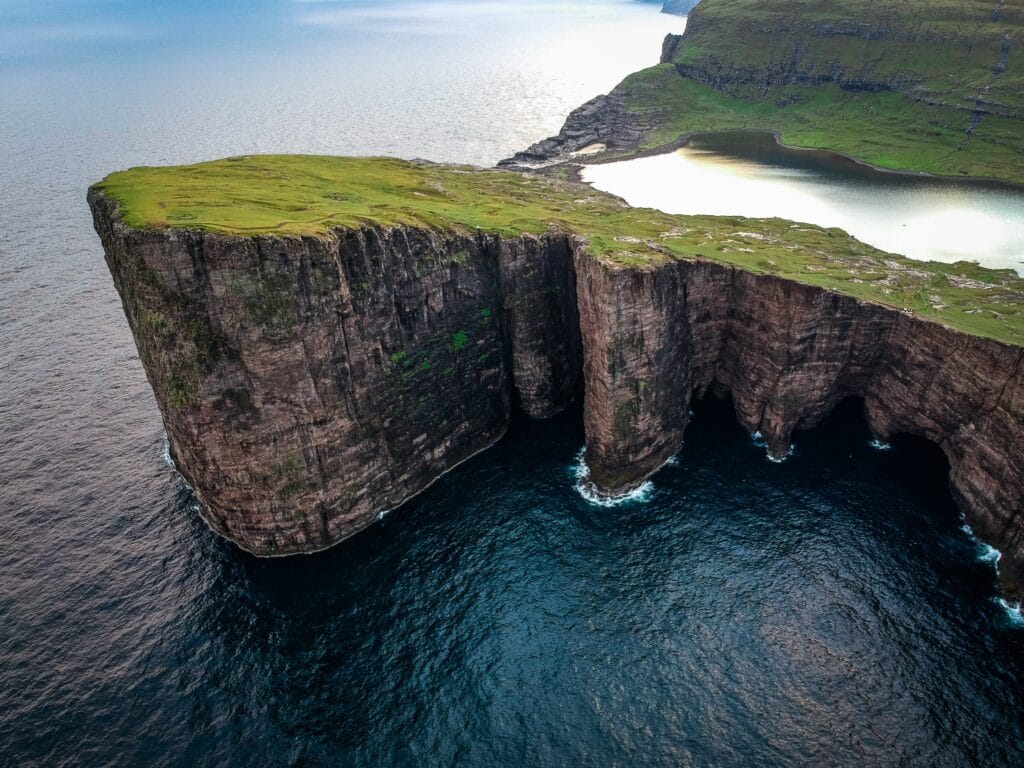
Early Faroese oral literature became the basis for modern nationalism in the 19th century and led to the creation of a written Faroese language by the folklorist Venceslaus Ulricus Hammershaimb.
Nationalist agitation hastened the restoration of the old Faroese Lagting (a combined jury and parliament) in 1852 and the end of the trade monopoly in 1856.
A Home Rule Party was formed in 1906. During World War II Great Britain controlled the Faroes while the Germans occupied Denmark, a situation that strengthened demands for home rule.
After the Lagting elections of 1946 reversed the majority vote for independence in an earlier plebiscite, negotiations began again in Copenhagen. In 1948 the islands were granted self-government under the authority of Denmark, with their own flag and unit of currency (the krona); Faroese was given equal status with Danish.
The University of the Faroe Islands in Tórshavn was founded in 1965.
Poor fiscal discipline in the 1980s, coupled with the collapse of the Faroese fishing industry because of overfishing, resulted in an economic crash in the early 1990s that required Danish intervention.
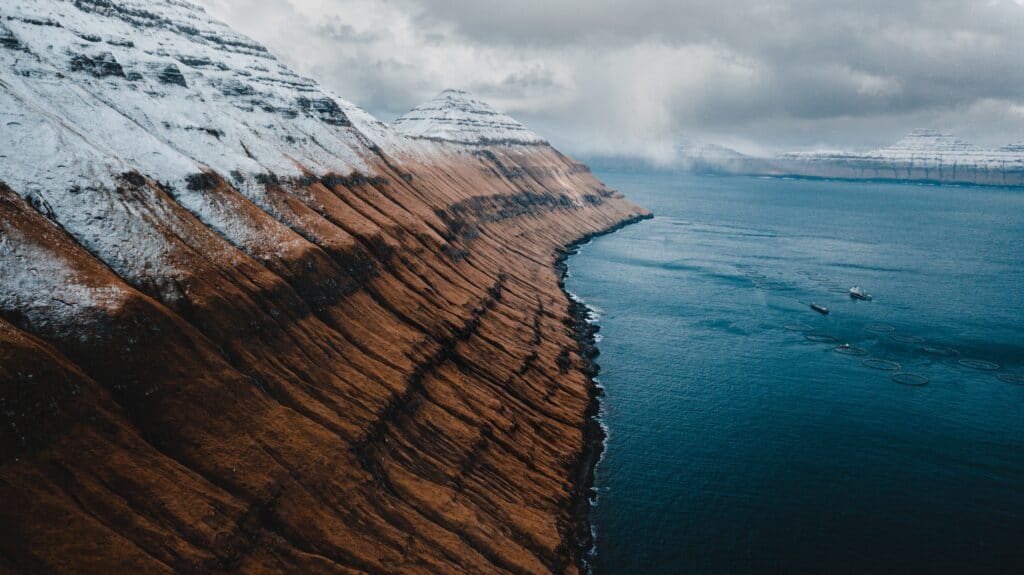
The islands rebounded, though, to face the 21st century with renewed vigour, buoyed by the economic promise of offshore oil drilling and a growing independence movement.”
The Faroe Islands is not a member of the European Union despite the fact that it is a self-governing region.
- Main industries: Fishing and aquaculture, shipping and offshore services, tourism and prospects for petroleum in Faroese area
- Religion: Evangelical Lutheran
- Government: Parliamentary democracy
- Anthem: Tú alfagra land mítt
TRAVELLING INFORMATION
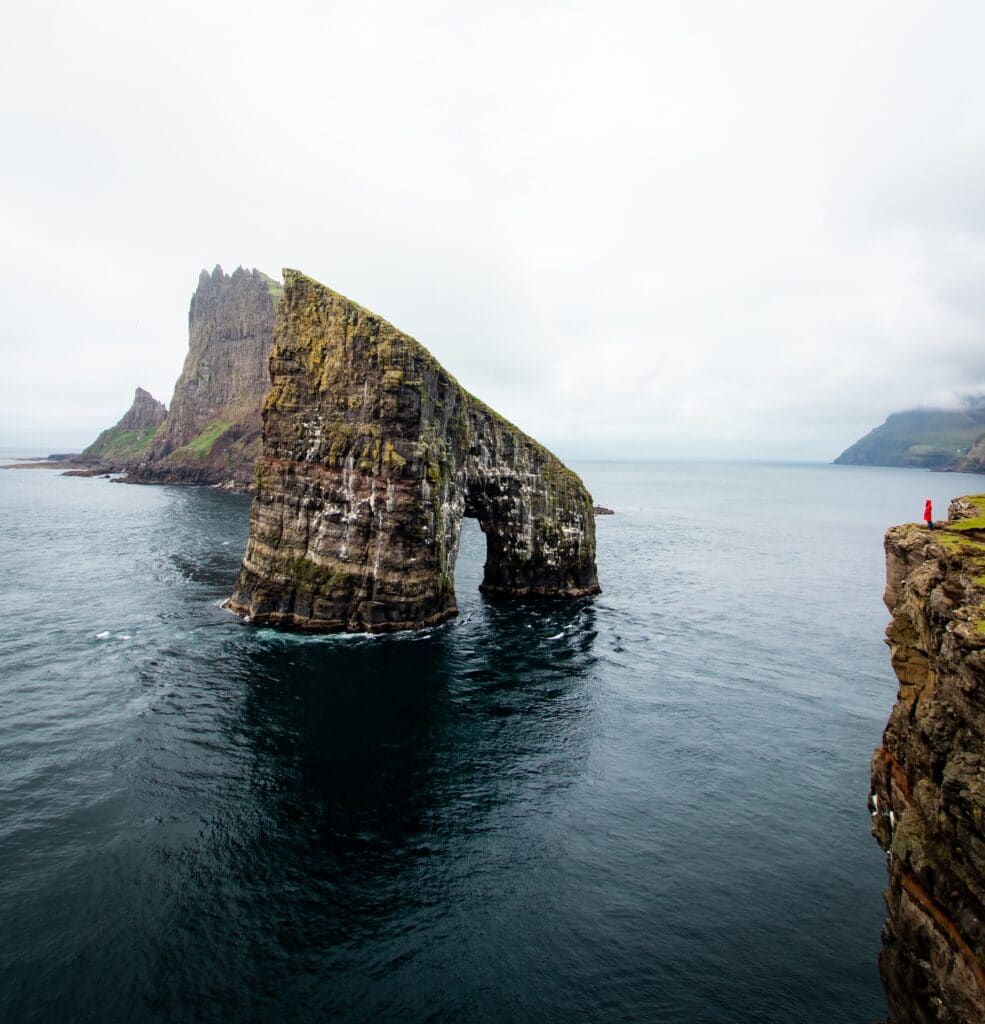
- Currency: Faroese króna (DKK)
- International telephone code: +298
- Time: GMT (winter); GMT+1 (summer)
- Electrical voltage: 220V; European two-pin plugs
- Weights and measures: Metric
- In the capital, Tórshavn, transport with city buses is free of charge.
Public holidays: New Year’s Day 1 January, Maundy Thursday, Good Friday, Easter Sunday, Easter Monday, Flag Day 25 April, Common Prayers’ Day (May), Ascension Day, Whit Sunday, Whit Monday, Ólavsøka 28-29 July, Christmas 24-26 December, New Year’s Eve 31 December
FAROE ISLANDS HIKING INFORMATION
A short hike into the mountains affords numerous vantage points that overlook awe-inspiring peaks in one direction and the disheveled surface of the ocean in another.
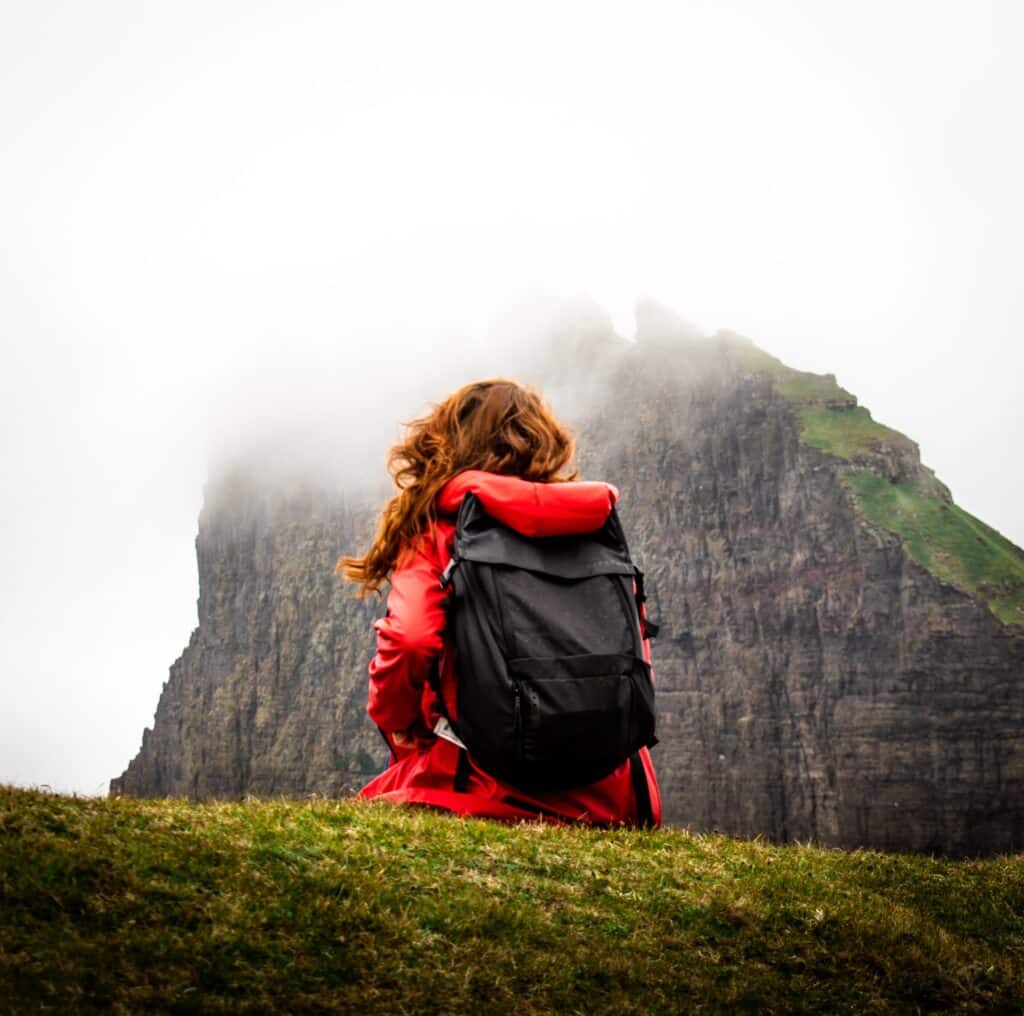
One of the many special features of the Faroe Islands is that you don’t have to go far to experience magnificent and untouched nature.
VILLINGARDALSFJALL / ENNIBERG
The hike up Villingardalsfjall from Viðareiði village costs DKK200 per person. This price is mandatory and does not include a guide.
If you wish to hike to all the way to Enniberg, you must book a guide.
The DKK200 must be placed in the mailbox by the gate leading to the trail.
DRANGARNIR – SEA STACKS
There are guided tours to the sea stacks on Wednesdays, Saturdays and Sundays at 11:00 from 1 April to 1 October.
The hike costs DKK550 per person and can only be done with a guide.
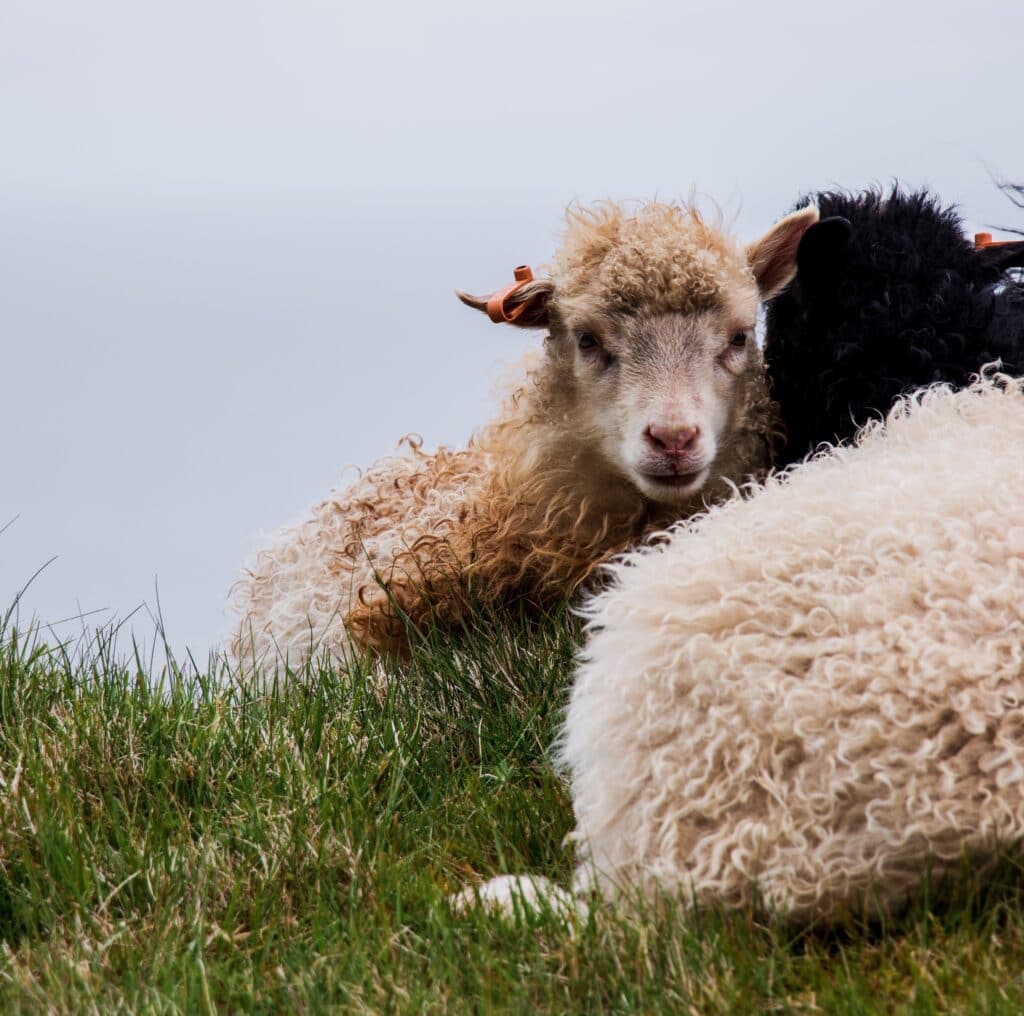
For more information and to book, visit www.hiking.fo.
FAROE ISLANDS – NÓLSOY
The DKK100 per person hiking fee on Nólsoy is only commercial trips, i.e. hikes organised by a business. Individuals wishing to hike may do so without paying the hiking fee. This hiking permit can be purchased by contacting Visit Nólsoy.
FAROE ISLANDS – MYKINES
The island of Mykines is one of the most beautiful places in the whole country. Its rich birdlife (hundreds of puffins!) and awe-inspiring beauty have made it into one of the most popular destinations for travellers.
Between 1 May and 31 August, each person traveling to Mykines with the ferry must pay DKK 100 each way and if one wishes to travel beyond the small village area (this includes the hike out to the lighthouse at the end of the island, Mykineshólmur, that passes through the puffin colony) one has to pay an additional DKK 250 per person .
The money collected is earmarked for maintenance of the birdlife and nature on the island. The fee can be paid by visiting mykines.fo.
FAROE ISLANDS – SAKSUN
The walk from the valley in Saksun to the black sand in the lagoon is restricted. A fee of DKK75 is required from anyone (Faroe Islanders and foreigners, including children) wishing to take the walk.
The fee can be paid by credit card at the gate in the valley.
TRÆLANÍPA / BØSDALAFOSSUR
The hike along Leitisvatn/Sørvágsvatn out to Trælanípa and Bøsdalafossur waterfall is a favourite among visitors from abroad and locals – mostly because of the optical illusion that awaits at the end of the hike.
The view of the lake hanging over the ocean is one of the most photographed images from the Faroe Islands.
The hike, which takes about 45 minutes to walk one way, is relatively easy and is located only a 5-minute drive from the country’s only airport.
Tourists are required to pay DKK450 per adult. Children aged seven to fourteen pay DKK150 and children aged six and younger can hike for free.
The fee includes a tour guide and an info brochure. A packed lunch can be ordered for an additional DKK100.
The start of the hike includes a small shed where visitors can purchase hot drinks, sweets and traditional Faroese food. Toilet facilities are on site.
There are three guided hikes per day, starting at 9:00, 12:00 and 15:00, respectively.
If you wish to hike without a guide, the fee is DKK200 per person.
For more information and to book a hike, visit www.tralanipan.fo.
More Adventure
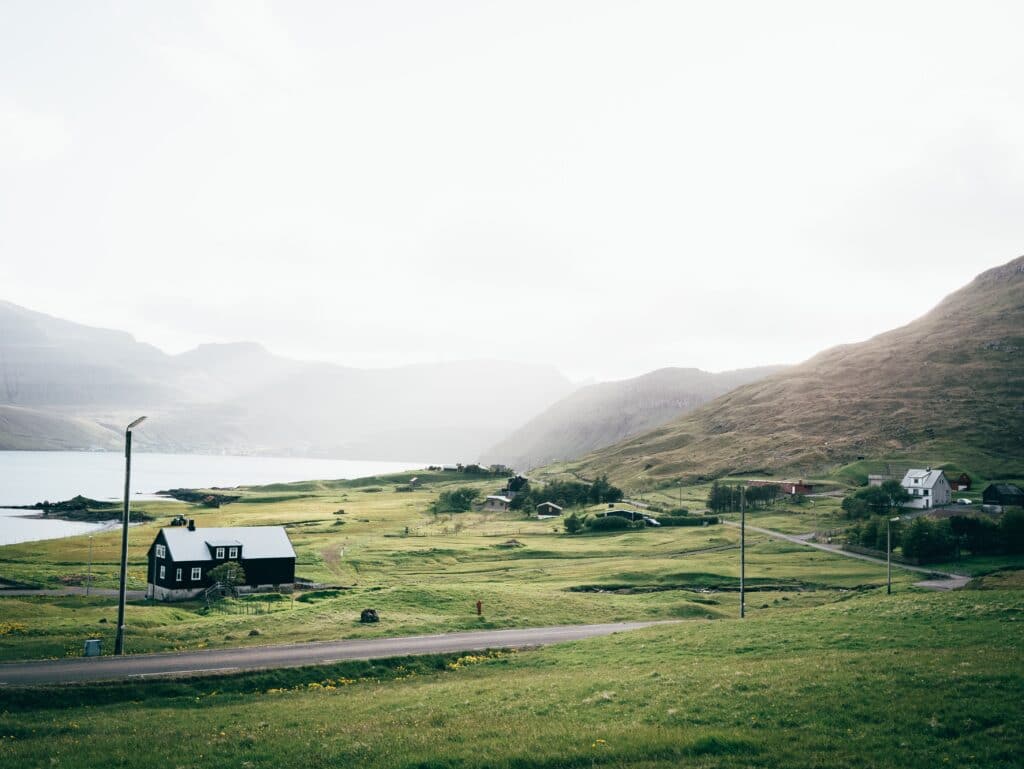
Check out why you should plan an adventure to Greenland.

